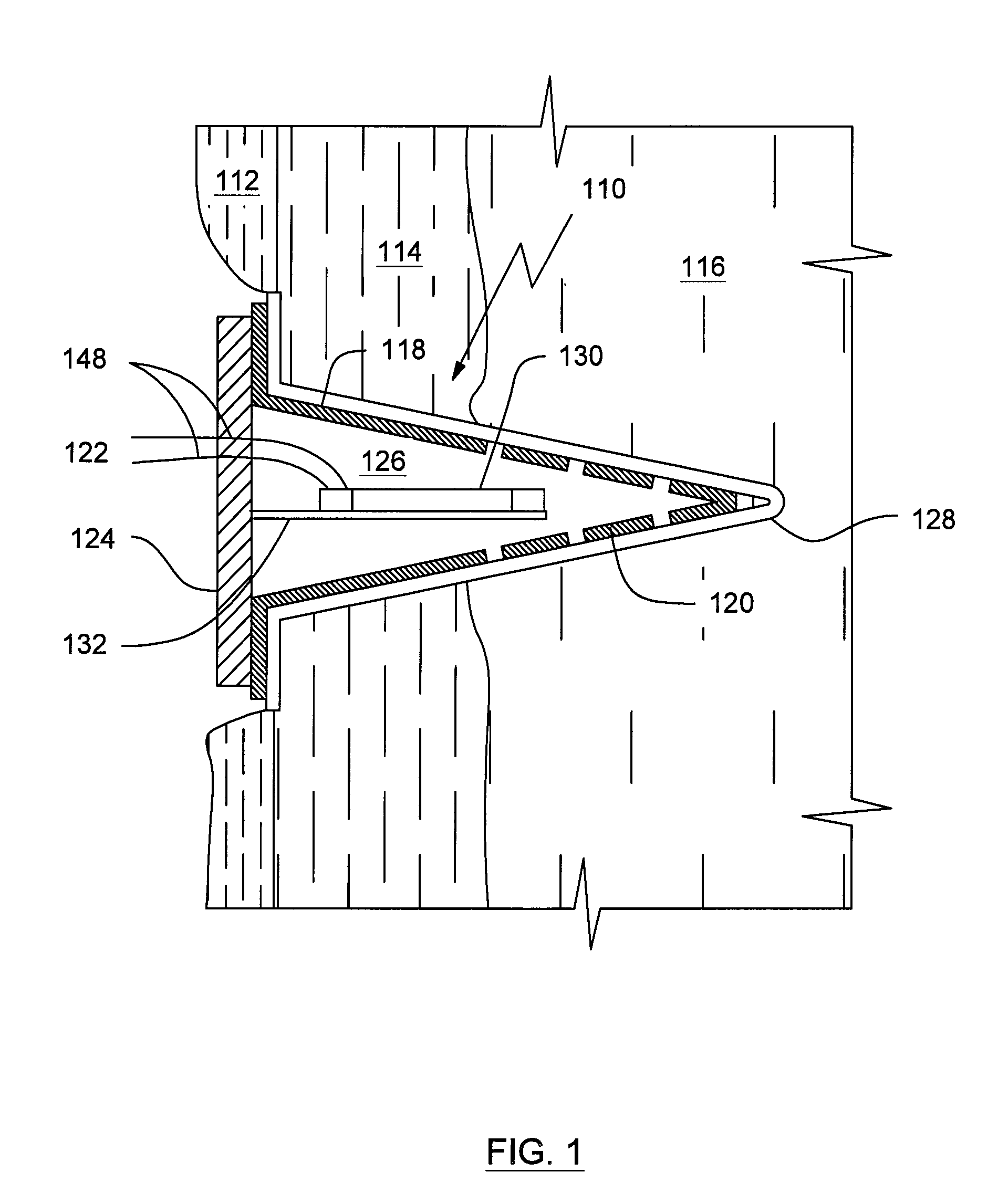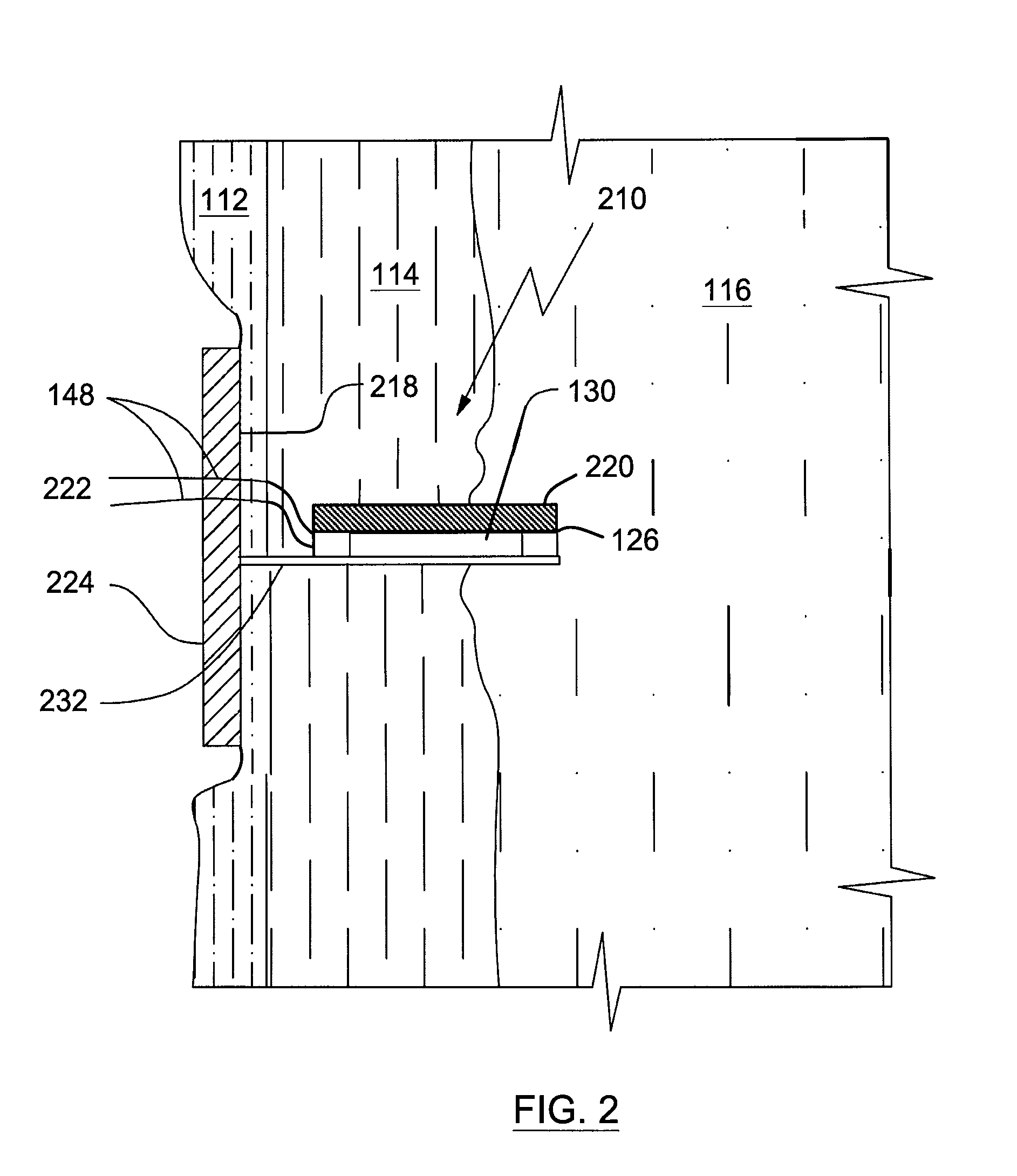Microtensiometer sensor, probe and method of use
a microtensiometer and micro-fluidic technology, applied in surface tension analysis, instruments, transportation and packaging, etc., can solve the problems of insufficient understanding of mechanisms, inability to easily quantify and continuously monitor plant water status, and inability to monitor continuous water sap sta
- Summary
- Abstract
- Description
- Claims
- Application Information
AI Technical Summary
Benefits of technology
Problems solved by technology
Method used
Image
Examples
Embodiment Construction
[0031]Microtensiometry is a required method for sensing the negative sap chemical potential in situ in the plant due to its range of measurement, accuracy, compatibility with continuous operation, and the ease with which the signal can be transduced electronically. Tensiometry allows chemical potential to be measured via the change in pressure within an enclosed volume of liquid water. Described briefly, the enclosed liquid is allowed to equilibrate with the water vapor in an external environment across a porous wick. For sub-saturated vapors (e.g., relative humidity<100%) the pressure in the enclosed liquid drops below atmospheric and reaches negative values, referred to as tension.
[0032]Monitoring water status in vines presents at least two significant drawbacks in tensiometers currently available for use in soils. One is the large form factor—existing designs are too large for direct embedding in the plant. The other drawback is insufficient range. The maximum tensions measurable...
PUM
| Property | Measurement | Unit |
|---|---|---|
| diameter | aaaaa | aaaaa |
| mean diameter | aaaaa | aaaaa |
| diameter | aaaaa | aaaaa |
Abstract
Description
Claims
Application Information
 Login to View More
Login to View More - R&D
- Intellectual Property
- Life Sciences
- Materials
- Tech Scout
- Unparalleled Data Quality
- Higher Quality Content
- 60% Fewer Hallucinations
Browse by: Latest US Patents, China's latest patents, Technical Efficacy Thesaurus, Application Domain, Technology Topic, Popular Technical Reports.
© 2025 PatSnap. All rights reserved.Legal|Privacy policy|Modern Slavery Act Transparency Statement|Sitemap|About US| Contact US: help@patsnap.com



